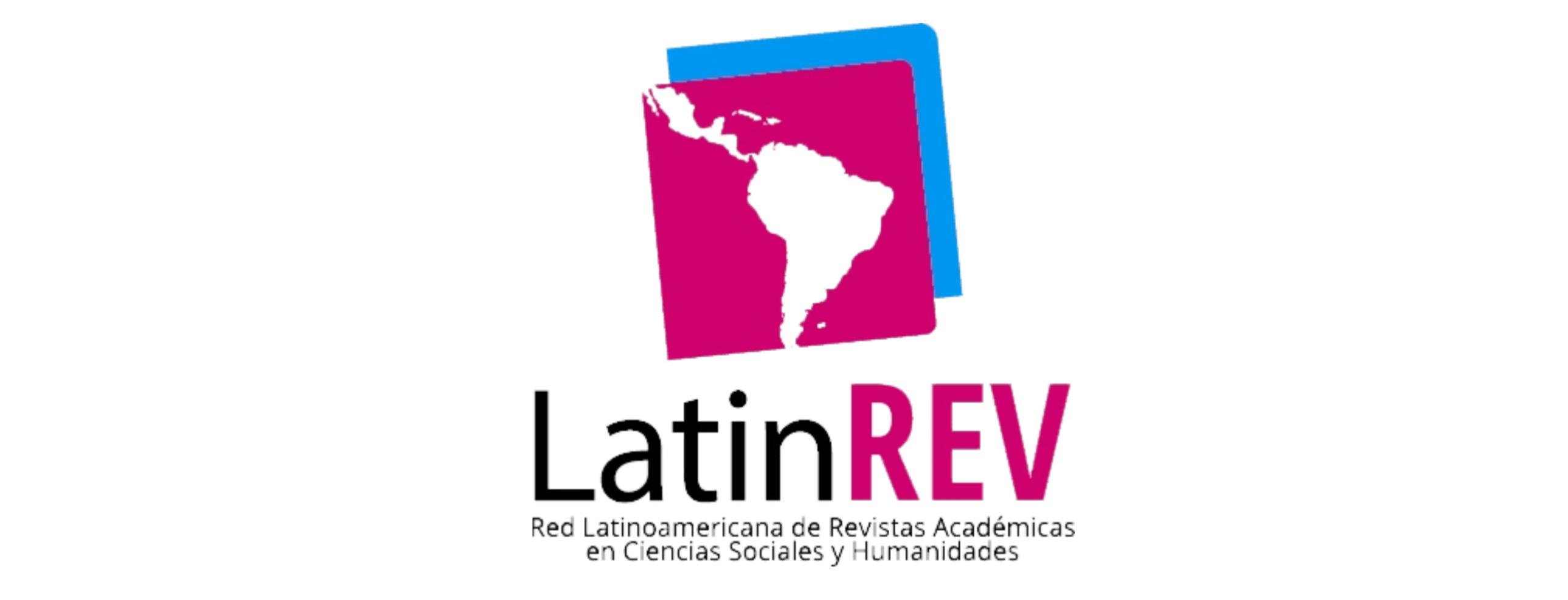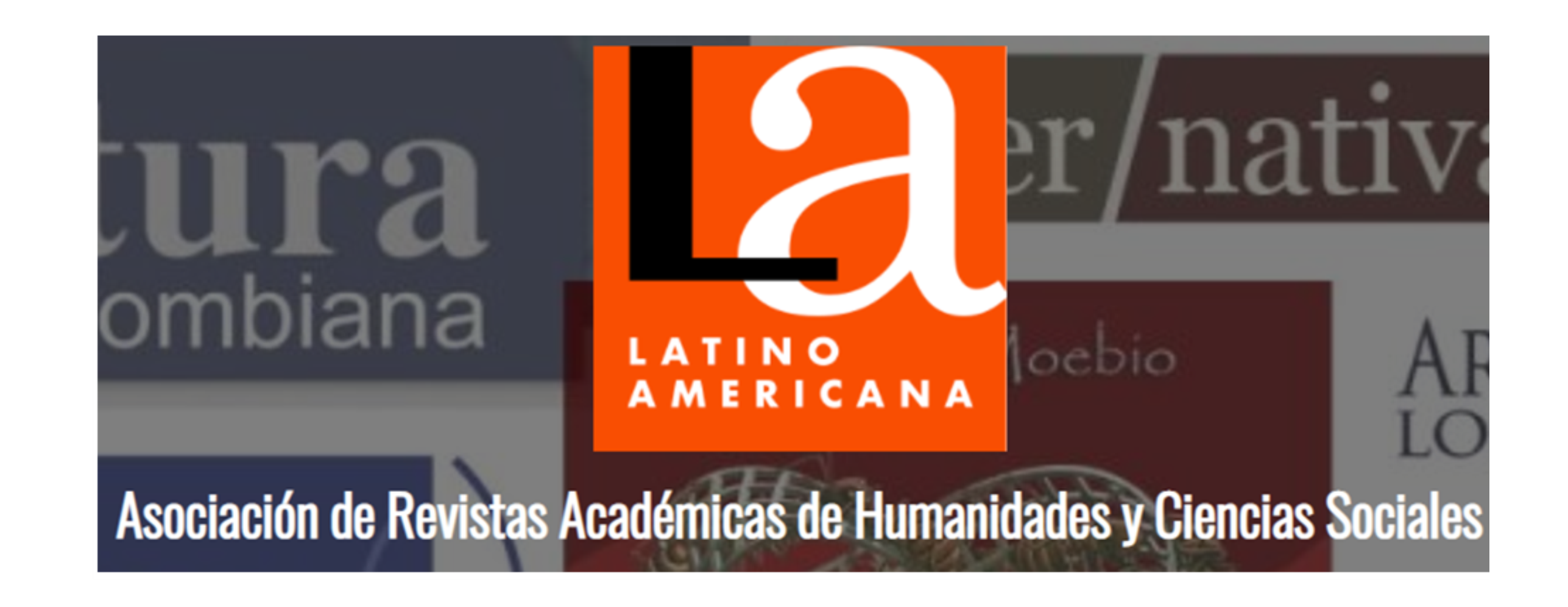Teachers' perspectives on communicative language teaching: a review of the literature
DOI:
https://doi.org/10.57201/rcff.v18i2.4052Palabras clave:
Second Language, CLT, EFL, BICS, Meaningful languageResumen
In teaching English, there is always the discussion on which approach to apply in order to make the learning process successful for learners. The approach which this study focused on is the Communicative Language Teaching approach (CLT). This research aimed to describe the teachers’ perceptions on the use of CLT in a private language institute in Asuncion, Paraguay. This mixed method study used an initial questionnaire, then, semi-structured interviews method to collect the data. The results showed that participants generally had positive perceptions towards the use of CLT. There were also some diverse perceptions on the difficulties of applying the approach. The results from this study may be useful for future studies regarding this teaching approach. At the same time, it may provide significant data on teachers’ perception on the approach being applied in the institute where the data was gathered.
Referencias
Abahussain, O. (2016, January). Schools, Implementing Communicative Language Teaching Method in Saudi Arabia: Challenges Faced by Formative Year Teachers in State. Stirling, Saudi Arabia: University of Stirling .
Abdullah, W. (2018). Communicative Language Teaching: Possible Alternative Approaches to CLT and Teaching Contexts. English Language Teaching;, 132- 135.
Ahmad, S., & Rao, C. (2013). Applying Communicative Approach in Teaching English as a Foreing Language: A Case Study of Pakistan. Porta Linguarum, 197.
Alam, M. (2016). Challenges in implementing CLT at secondary school in rural Bangladesh. Chittagong: International Islamic University chittagogn Press.
Alferhaid, M. (2015). Communicative Language Teaching. International Journal of Scientific & Engineering Research, 6(9), 1049-1050.
Ali, G., Allah, N., & Bakhtiarvand, M. (2013). Perceived Problems in using CLT in language teaching by EFL Iranian teachers. The International Journal of Language Learning and Applied Linguistics World, 10-12.
Alkhayyat, A. (2009). Measuring EFL Teachers' Knowledge of Communicative Language Teaching Approach an their Practices in the Jordanian Public Schools. Jordan Journal of Educational Sciences, 399-415.
Al-Mohana. (2014). English Language Teaching in Saudi Arabian Context: How Communicative Oriented is it? Scientific Journals. Language and Translation, 22-28.
Alvi, M. (2016): A Manual for Selecting Sampling Techniques in Research. A Manual for Selecting Sampling Techniques in Research
Anjaneyulu, T. (2014). A critical analysis of the English language textbooks in Andhra Pradesh, India. ELT Research Journal, 182.
Bachman, L., & Palmer, A. (1996). Language Testing Practice. New York: Oxford University Press.
Baker, C., & Wright, W. E. (2017). Foundations of Bilingual Education and Bilingualism (6th ed.). Bristol: Short Run Press Ltd, 234-235.
Banditvilai, C. (2012). Enhancing Students' Language Skills through Blended Learning.
The Electronic Journal of Learning , 223-230.
Basta, J. (2011). The Role of the Communicative Approach and Cooperative Learning in Higher Education. Facta Universitatis, 9, 126-140.
Belchamber, R. (2007). The Advantages of Communicative Language Teaching. The Internet TESL Journal, 2-3.
Bilash, O. (2011). B-SLIM Overview. Retrieved January 16, 2019, from B-SLIM Overview: https://sites.educ.ualberta.ca/staff/olenka.bilash/Best%20of%20Bilash/dr.b%20 bio.html
Bio, O. B. (January de 2011). Best of Bilash Improving Second Language Education. Retrieved January, 5, 2019, from Best of Bilash Improving Second Language Education: https://sites.educ.ualberta.ca/staff/olenka.bilash/Best%20of%20Bilash/bics%20 calp.html
Bonenfant, J. L. (2011). Miss usage and Misinterpretation of Basic Interpersonal Communication (BICS) and Cognitive Academic Language Proficiency (CALP) in Teaching English Language Learners (ELLS) in First and Second Grades. Florida Memorial University: Florida Memorial University Press.
Brown, D. (2001). Teaching by Principals: an Interactive Approach to Language Pedagogy (Vol. 2). White Planes. NY: Longman.
Brumfit, C. (1985). English in the World: Teaching and Learning Language and Literatures. In C. Brumfit, Creativity and Constrains (p. 156). London: Cambridge University Press.
Candlin, C. (1981). The Communicative Teaching of English. En C. Candlin, The Communicative Teaching of English (págs. 1-3). London: Longman.
Carabanes, C. (2014, September). Challenges Perceived by Teachers in the Implementation of Communicative Language Teaching in Chile. Challenges Percieved by Teachers in the Implementation of Communicative Lenguage Teaching in Chile. Chile.
Castaldi, M., & Herker, F. (2013). How to improve the speaking skill through the communicative approach. Revista Científica de Letras, 37-39.
Chang, M. (2011). Factors Affecting the Implementation of Communicative Language.
English Language Teaching, 3-11.
Cook, H. (2018). Linguisticator. Communicative Competence. Retrieved February, 09, 2019, from Linguisticator: https://linguisticator.com/communicative- competence/
Crumlish, L. (2018). Bilingual Kifspot. Stages of Second Language Acquisition. Retrieved December, 10, 2018, Bilingual Kidspot: https://bilingualkidspot.com/2018/09/19/5-stages-of-second-language- acquisition/
Cummins, J. (1999). BICS and CALP: Clarifying the Distinction.
Cumminns, J. (2008). BICS and CALP Empirical and Theoretical Status of the Distinction. Springer, Boston, MA: Hornbenger N.H (eds).
Dailey, A. (2010). Difficulties Implementing CLT in South Corea: Mismatch between language policy and what is taking place in the classroom. Birmingham: University of Birmingham Press.
Demirezen, M. (1988). Behavorist theory and language learning. Behavorist theory and language learning. Eğitim: Hacettepe ÜniversitesI.
Didenko, A., & Pichugova, I. (2015). Post CLT or Post-Method: major criticisms of the communicative. Post CLT or Post-Method: major criticisms of the communicative (pp. 1-4). Tomsk, Rusia: Tomsk Polytechnic University.
Doman, E. (2005). Current Debates in SLA. The Asian EFL Journal Quarterly, 131-143. Dörnyei, Z. (2009). The 2010s Communicative language teaching in the 21st century: The 'principled communicative approach'. Perspectives , 33-44.
Ellis, G. (1996). How culturally appropriate is the communicative approach. ELT Journal, 214-217.
Ellis, R. (2003). Task-based language learning and teaching. Oxford: Oxford University Press.
Escamilla, K., & Grassi, E. (2000). A Brief Description of Secon Language Acquisition. Colorado: University of Colorado.
Esmer, E., Güven, G., Aydın, O., & Özd, B. (2016). Perceptions of education faculty students on teaching. Academic Journals, 1.
Farooq, M. (2015). Creating a Communicative Language Teaching Environment for Improving Students' Communicative Competence EFL/EAP University Level. International Education Studies, 183-187.
Fotos, S. (1994). Integrating grammar instruction and communicative language use through grammar conciousness-raising tasks. TESOL Quarterly, 323-351.
Freeman, L. (2008). Techniques and Principles in Language Teaching. Oxford: Oxford University Press.
Fukushima, M. (2006). Conceptualizing Language Proficiency: BIBCS and CALP Revisited. Tokyo: Keio University Press.
Ghosn, R. (2010). Motivating Students to Perform Better Orally in Communicative Language Teaching Frame Work. Constantine, Democratic Republic of Algeria: University of Constantine.
Haimi, A., Ilias, N., & Shafiq, M. (2012). Communicative Language Teaching: Difficulties, Problems and Limitations Regarding Its Implementation in the Malaysian ELT Context. International Conference on Active Learning, 306-311.
Halliday, M. (1973). Explorations in the Functions of Language. London: Mcmillan Canada.
Harmer, J. (2007). The Practice of English Language Teaching. En J. Harmer, The Practice of English Language Teaching (pp. 69-72). Harlow, United Kingdom: Pearson Longman.
Harmer, J.; Thornbury, S. (2013, July 13). Communicative Language Teaching. Youtube.com. Retrieved August 5, 2017, from Communicative Language Teaching: Jeremy Harmer and Scott Thornbury: https://www.youtube.com/watch?v=hoUx036IN9Q&t=65s
Haynes, J. (2005). Everything ESL. Pre-Production and Silent Period. Retrieved November, 19, 2018, from Everything ESL: http://www.everythingesl.net/inservices/pre_producti_silent_period_93415.php
Heitler, D. (2005). Teaching with Autentic Materials. Pearson Education, 8-13. Heng, K. (2014). CLT in EFL contexts. Ma TESOL, 43,44.
Hill, J. D., & Björk, C. (2008). Classroom Instruction that works with English Language Learners. Alexandria: Association for Supervision & Curriculum
Hong, Y. (2008). On teaching strategies in second language acquisition. Haiko Hainan: Hainan University.
Howatt , A., & Smith, R. (2014). The History of Teaching English as a Foreing Language, from a British and European Perpective. Language and Hitory, 75- 95.
Howatt, A. (1984). A History of English Language Teaching. Oxford: Oxford University Press.
Hu, G. (2002). Potential Cultural Resistance to Pedagogical Import: The Case of Communicative Language Teaching in China. Language Culture and Curriculum, 102.
Huang, S.-H. (2016). Communicative Language Teaching: Practical Difficulties in the Rural EFL Classrooms in Taiwan. Journal of Education and Practice, 186-198.
Hymes, D. (1972). On Communicative Competence. Baltimore: Penguin Education. Issa, A. S. (2016, April). English Teachers' Perceptions Toward The Effectiveness of Using Communicative Language Teaching Grammar at Al Ain Public Schools. Ain, United Arab Emirates: United Arab Emirates University.
Ju, F.-a. (2013). Communicative Language Teaching (CLT): A Critical and Comparative Perspective. Theory and Practice in Language Study , 1.
Jung, S., & Norton, B. (2002). Language Planning in Korea: The New Elementary English Program. Vancouver : British Columbia University Press.
Karim, K. M. (2004). Teacher's perception, attitudes and expectations about Communicative Language Teaching (CLT) in post-secundary education in Bangladesh. Bangladesh: Bangladesh University Press.
Karunakaran, P. (2013). Integrating Accuracy and Fluency in. language in India, 178- 180.
Kasumi, H. (2015). Communicative Language Teaching and Its Impact on Students' Performance. Journall of Educatioal and Social Research, 155-164.
Khatib, M. (2016). BICS and CALP: Implications for SLA. Journal of Language
Teaching and Research, 382-290.
Koay, J. (09 de May de 2018). EduMaxu. Strategic Competence. Retieved January, 16, 2019, from EduMAxi: http://www.edumaxi.com/what-is-strategic-competence/
Koffka, K. (1922). Perception: An Introduction to the Gestalt-Theory. Psychological Bulletin, 1-10.
Krashen, S. (1985). The Input Hypothesis. Issues and Implications. Los Angeles : Longman.
Krashen, S., & Terrel, T. (1983). The Natural Approach: Language Acquisition in the Classroom.
Lantolf, J. P., Thorne, S. L., & Poehner, M. E. (2015). Sociocultural theory and second language acquisition. In B. VanPatten, & J. Williams, Theories in Second Language Acquisition (pp. 207-226). New York & London : New York, London: Routledge.
Le, C. (2005). From Passive to Participant Active Thinker. A Lerner-Centered Approach to Materials Development. English Teachig Forum, 2-26.
Lightbown, P. (1990). Focus on form and corrective feedback in communicative language teaching: Effect on second language learning. Concordia Montreal University, 429-444.
Lodico, M. G., Spaulding, D. T., & Voegtle, K. H. (2010). Methods in Educational Research: From Theory to Practice (2nd ed.). San Francisco: Jossey-Bass.
Lowe, M. (2005). The Shibboleths of TEFL: Straightening out our thinking Modern English Teacher . Cambridge University, 1-12.
Mamun, A. (2014). Advocacy of the Eclectic Approach to ESL/EFL Teaching in Bangladesh. Jagannath University Journal of Arts, 244-246.
Mihailovna, E. (2015). Evolution of Foreign Language Teaching Methods.
Mediterranean Journal of Social Sciences, 246-250.
Moisur, M., Mehar, M., & Pandian, A. (2017). Exploring ESL Teacher Bilefs and Classroom Practices: A Case Study. International Journal of Instruction, 11, 295-310.
Nandita, W., Sukirlan, M., & Sudirman. (2013). The effect of using CLT to improve speaking. FKIP Lampung University, 2-10.
Nishino, T. (2008). Japanese Secondary School Teachers’ Belief and Practices Regarding Communicative Languge Teaching. Jalt Journal, 43.
Nordquist, R. (2017, September 04). ThoughtCo. Retrieved January 22, 2019, from https://www.thoughtco.com/english-as-a-foreign-language-efl-1690597
O’Hare, K., & Bo, X. (2013). In B. Tomlinson, & C. Whittaker, Blended Learning in English Language Teaching: Course (pp. 83-87). London: British Council Press
Omondi, A. (2012). Challenges Teachers Face in the Use of the CLT in the Teaching Listening and Speaking Lessons in Lugrarari, Kenya. International Journal of Science and Research, 83-88.
Othman, M. (2016). Implementing Communicative Language Teaching Method in Saudi Arabia: Challenges Faced by Formative Year Teachers in State Schools. University of Stirling, 128-132.
Ozesevik, Z. (2010). The use of Communicative Language Teaching : Turkish EFL Teachers' perceived difficulties in implementing CLT in Turkey. The use of Communicative Language Teaching : Turkish EFL Teachers' percived difficulties in implementing CLT in Turkey. Urbana, Illinois, Turkey: University of Illinois at Urbana-Champaign.
Pan, Y.-c. (2012). A Closer Examination of Communicative Language Teaching.
Studies in Literarure and Language, 40-44.
Pica, T. (2000). Tradition and transition in English language teaching. Fifth International Symposium on Teaching English, Taipei, Taiwan, Republic of China, and Working Papers in Educational Linguistics, 2-20.
Pickens, J. (2005). Attitudes and Perception. In J. Pickens, Attittudes and Perception. Organizational Behavior in Health (pp. 52-55). Harrisonburg: James Madison University.
Prabhu, U. (1983). Procedural syllabus. Trends in language syllabus design (pp. 272- 280). Singapore: Singapore University Press.
Rao, Z. (2002). Chinese students' perceptions of communicative and non- communicative activities in EFL classroom. Elsevier, 85-100.
Rashtchi, M., & Keyvanfar, A. (2007). Quick and easy (3rd ed.). Rahnama Publications.
Razavi, S., & Taghipour, D. (2017). On the comparability of strong and weak versions of task based approaches to improve Iranian elenentary-level EFL learners reading comprehension. Journal of Language and Cultural Education, 229- 244.
Reza, M. (2015). BICS & CALP Revisited: A Critical Appraisal. International Journal of Educational Investigations, 103-105.
Richards, J. (2006). Communicative Language Teaching Today. In J. Richards, Communicative Language Teaching Today (p. 45). New York: Cambridge University Press.
Richards, J., & Lockhart, C. (1994). Reflective teaching in second language classrooms.
New York: Cambridge University Press.
Ridge, E. (1994). Communicative Language Teaching: Some of the challenges for teacher trainers in Africa.
Robertson, J. (2012, July). Problems in Adopting CLT in a Rural Korean Primary School. Problems in Adopting CLT in a Rural Korean Primary School. Birmingham, United Kingdom: University of Birmingham.
Rubio, F., Passey , A., & Campbell , S. (2011). Grammar is disguise: The hidden agenda of communicative language teaching textbooks. University of Utah, 160-161.
Sacarino, A., & Liddicoat, A. (2009). Teaching and Learning Languages.
Commonwealth: Department of Education of Commonwealth.
Saputra, J. B. (2015). Communicative Language Teaching: Changing Students’ Speaking Skill. Premise Journal, 2-11.
Schultz, B. (2011, March 9). Biblical Language Center. Reasons for CLT. Retrieved from Biblical Language Center: https://www.biblicallanguagecenter.com/10- reasons-for-clt/
Shartri, P. (2010). Communicative approach to the Teaching English as a Second Language. Journal of Pedagogy, 227-250.
Siddiqui, O. (2015). Ineffectiveness of the Communicative Language Teaching approach in language. Ineffectiveness of the Communicative Language Teaching approach in language. Jeddah, Saudi Arabia: King Abdulaziz University.
Skehan, P. (2009). A framework for the implementation of task-based instruction. Task- based language teaching. Amsterdam: John Benjamins.
Smigie, H., Patel, F., Robbins, J. R., & Wilson, A. (2010). Perceptions on effective teaching and learning at Flinders University. Flinders Universitu, 1.
Stufflebeam, R. (2006). Introduction to the Methods Used to Study Perception.
Consortuim on Cognotive Science Instruction, 2.
Swam, M. (1985). A Critical Look at the Communicative approach. ELT Journal, 2-10.
Tanaka, T. (2009). Communicative Language Teaching and it Cultural Appropiateness in Japan. Doshisha studies in English, 107-123.
Tawil, H. (2018). The Blended Learning Approach and Its Application in Language Teaching. International Journal of Language and Linguistics, 45-56.
Taylor, D. (1988). The meaning and the use of the term "competence" in linguistics and applied linguistics. Oxford: Oxfor University.
Thamarana, S. (2015). A Critical Overview of Communicative Language Teaching.
International Journal of Communicative Language Teaching.
Thompson, G. (1996). Some misconceptions about CLT. ELT Journa, 9-12.
Thornbury, S. (2013, July 5). An S-Z of ELT. Retrieved from An S-Z of ELT: https://scottthornbury.wordpress.com/2015/03/08/c-is-for-clt/
Toro, V., Camacho, G., Pinza, E., & Paredes, F. (2018). The Use of Communicative Language Teaching Approach to Improve Oral Skills. Canadian Center of Science and Education, 110-118.
Ventriglia, L. (1992). Stages of Second Language Acquisition. Beacon Learning Center.
Vygotsky, L. S. (1980). Mind in Society: Development of Higher Psychological Processes. Cambridge: Harvard Press.
Widdowson, H. (1978). Teaching Language as Communication. En H. Widdowson, Teaching Language as Communication. Oxford: Oxford University Press.
Wilikins, D. (1973). The Linguistic and Situacional Content of the Common Core in a Unit/Credit System. Strasbourg: Council of Europe.
Winch, J. (2016). A Case Study of Japanese Language Teaching in a Multicultural Learning Enviroment. The IAFOR Journal of Language Learning, 4-13.
Yang, Y. I. (2014). The Implementation of Speaking Fluency in CLT: An Observation of Adoption the 4/3/2 Activity in High Schools in China. International Journal of English Language Education, 197-200.
Yesilbursa, A; Arda A. (2014). Approaches and Principles in English As a Foreign Language (EFL) Education. Servet Çelik
Yuan, F. (2011). A Brief Comment on Communicative Language Teaching. Journal of Language Teaching and Research, 428-429
Zhao, H. (2011). How far do the theories of task-based learning suceed in combining communicative and form-focused approaches to L2 research. Journal of Cambridge Studies, 41-45.
Descargas
Publicado
Número
Sección
Licencia

Esta obra está bajo una licencia internacional Creative Commons Atribución-NoComercial-SinDerivadas 4.0.











